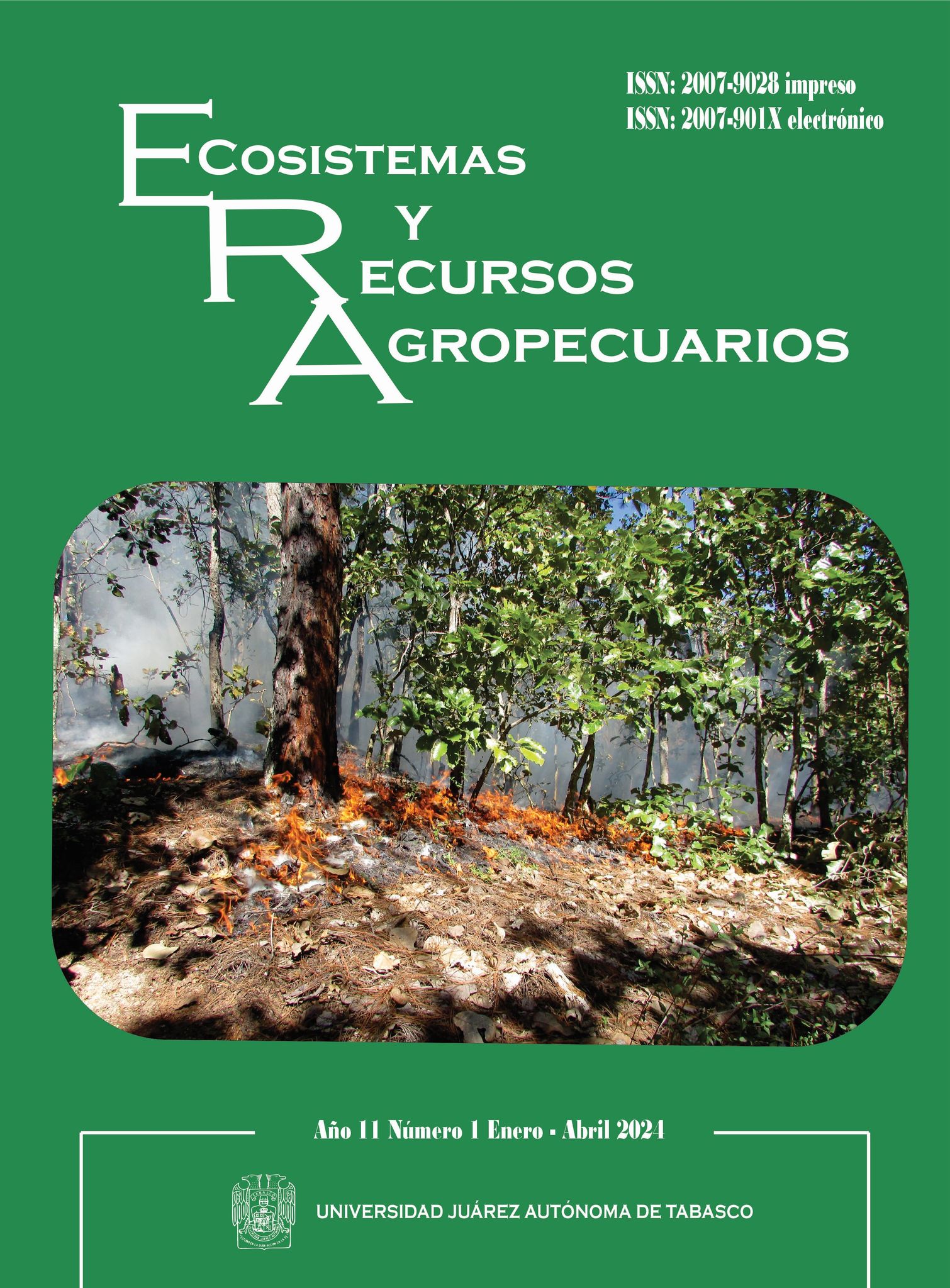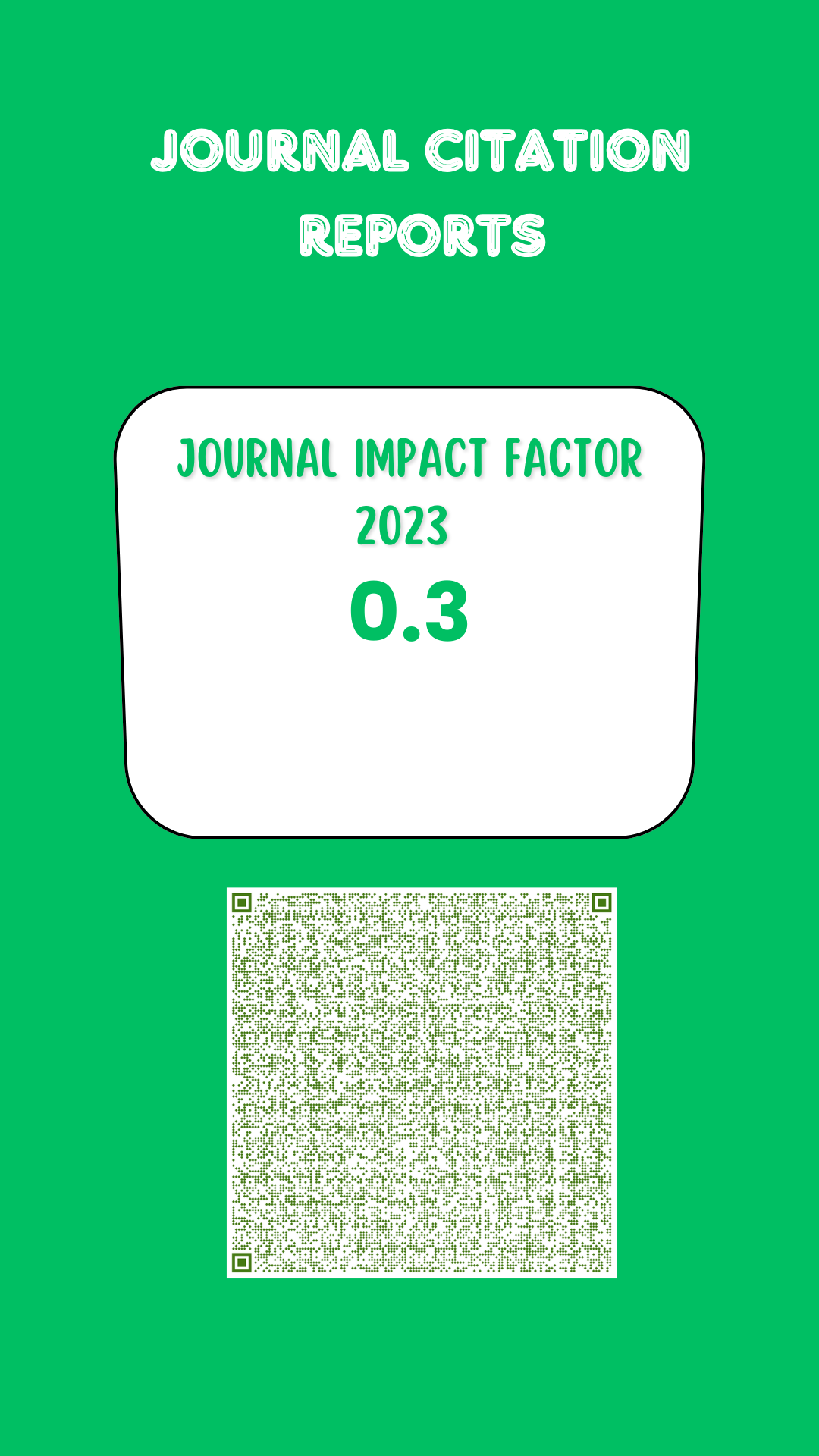Efectos subletales asociados a la resistencia a indoxacarb en la palomilla dorso de diamante
DOI:
https://doi.org/10.19136/era.a11n1.3888Palabras clave:
Insecticidas, Biología, Transgeneracional, Plutella xylostellaResumen
Plutella xylostella es una plaga de las más importantes en los cultivos de brassicaceas alrededor del mundo. El indoxacarb se utiliza ampliamente para el control de larvas de lepidópteros plaga. Este insecticida presenta una actividad lenta y efectos residuales prolongados los cuales impactan los hábitos y la fisiología de las plagas. Como objetivo se estableció la evaluación del efecto de concentraciones subletales de indoxacarb en la biología y tiempo de desarrollo de la palomilla dorso de diamante. Se realizó presión de selección del insecticida indoxacarb sobre P. xylostella, aplicando la CL20 de la generación anterior por las siguientes diez generaciones, se calculó la CL20 de la línea resistente (G10) y posteriormente se aplicó esta concentración a larvas de L3. Se evaluó el efecto en el porcentaje y peso de pupas, emergencia de adultos y oviposición para dos generaciones; además, del tiempo de desarrollo de huevo, larva, pupa y adulto. Los resultados mostraron que la resistencia y la exposición a CL20 de indoxacarb provocaron cambios en la biología y el desarrollo de P. xyllostella. Esto se manifestó en un aumento del porcentaje y peso de pupas formadas y emergencia de adultos, junto con una prolongación del tiempo de desarrollo de más de 10 días. Sin embargo, se observó una disminución de más del 50% en el número de huevos por hembra.
Descargas
Referencias
Abbott WS (1925) A method of computing the effectiveness of an insecticide. Journal Economic Entomology 18: 265-267.
Andaloro JT, Wing KD, Green J, Lang EB (2000) StewardTM dispersion and cotton leaf interactions: impact on cotton insect pests and safety to beneficial arthropods. In 2000 Proceedings Beltwide Cotton Conferences, San Antonio, USA, 4-8 January, 2000: Volume 2, 939-940. National Cotton Council.
Mota-Sanchez, D. and J.C. Wise. (2023) The Arthropod Pesticide Resistance Database. Michigan State University. http://www.pesticideresistance.org. Fecha de consulta:17 de agosto del 2023.
Bashari E, Ghadamyari M, Sendi JJ (2014) Toxicity, and biological and biochemical effects of hexaflumuron on the elm leaf beetle, Xanthogaleruca luteola (Col.: Chrysomelidae). Journal of Entomological Society of Iran 34(3): 35-46.
Bauer M, Greenwood SJ, Clark KF, Jackman P, Fairchild W (2013) Analysis of gene expression in Homarus americanus larvae exposed to sublethal concentrations of endosulfan during metamorphosis. Comparative Biochemistry and Physiology Part D: Genomics and Proteomics 8(4): 300-308.
Desneux N, Decourtye A, Delpuech, JM (2007) The sublethal effects of pesticides on beneficial arthropods. Annual Review of Entomology 52: 81-106.
Finney DJ (1971). Probit Analysis. 3rd Edition. Cambridge at the University Press. Cambridge, Reino Unido 120 p.
Guedes RNC, Smagghe G, Stark JD, Desneux, N (2016) Pesticide-induced stress in arthropod pests for optimized integrated pest management programs. Annual Review of Entomology 61: 43-62.
Han W, Zhang S, Shen F, Liu M, Ren C, Gao, X (2012) Residual toxicity and sublethal effects of chlorantraniliprole on Plutella xylostella (Lepidoptera: Plutellidae). Pest Management Science 68 (8): 1184–1190.
Harshman L.G, Song, KD, Casas J, Schuurmans A, Kuwano E, Kachman SD, et al. (2010) Bioassays of compounds with potential juvenoid activity on Drosophila melanogaster: Juvenile hormone III, bisepoxide juvenile hormone III and methyl farnesoates. Journal of Insect Physiology 56(10): 1465-1470.
IRAC (2019) IRAC Susceptibility test method 018. Insecticide Resistance Action Committee (IRAC). https://irac-online.org/methods/plutella-xylostella-larvae/. Fecha de consulta: 8 de marzo del 2019.
Kang WJ, Koo HN, Jeong DH, Kim HK, Kim J, Kim GH (2017) Functional and genetic characteristics of chlorantraniliprole resistance in the diamondback moth, Plutella xylostella (Lepidoptera: Plutellidae). Entomological Research 47(6): 394-403.
Li Z, Feng X, Liu SS, You, M Furlong, MJ (2016) Biology, ecology, and management of the diamondback moth in China. Annual Review of Entomology 61: 277-296.
Liu, J. L., Yang, X., Zhang, H. M., Chen, X., & Wu, J. C. (2013). Effects of indoxacarb on total protein, RNA, and DNA contents in the ovaries and fat bodies of Nilaparvata lugens Stål (Hemiptera: Delphacidae) adult females. Pesticide Biochemistry and Physiology, 106(1-2), 14-20.
Mahmoudvand M, Abbasipour H, Garjan AS, Bandani, AR (2011) Sublethal effects of indoxacarb on the diamondback moth, Plutella xylostella (L.) (Lepidoptera: Yponomeutidae). Applied Entomology and Zoology 46: 75-80.
Marak RM, Firake DM, Sontakke PP, Behere GT (2017) Mode of inheritance of Indoxacarb resistance in diamondback moth, Plutella xylostella (L.) and cross resistance to different groups of pesticides. Phytoparasitica 45(4): 549-558.
Nehare S, Moharil MP, Ghodki BS, Lande GK, Bisane KD, Thakare AS, et al. (2010) Biochemical analysis and synergistic suppression of indoxacarb resistance in Plutella xylostella L. Journal of Asia-Pacific Entomology 13(2): 91-95.
Pu X, Yang Y, Wu S, Wu Y (2010) Characterisation of abamectin resistance in a field‐evolved multiresistant population of Plutella xylostella. Pest Management Science: Formerly Pesticide Science 66(4): 371-378.
Rehan A, Freed S (2015) Fitness cost of methoxyfenozide and the effects of its sublethal doses on development, reproduction, and survival of Spodoptera litura (Fabricius)(Lepidoptera: Noctuidae). Neotropical entomology 44(5): 513-520.
SAS Institute Inc. (2002) Guide for personal computers. SAS institute, Cary, N.C.
Shen JL, Tan JG, Xiao B, Tan FJ, You ZP (1991) Monitoring and forecasting of Helicoverpa armigera (Lepidoptera: Noctuidae) resistance to pyrethroid pesticides in China. Chinese Journal of Applied Entomology 28: 337-341.
Song L, Zhang J (2013) Sublethal effects of indoxacarb and beta-cypermethrin on Plutella xylostella (Lepidoptera: Plutellidae). Acta Entomologica Sinica, 56(5): 521-529.
Sugumaran M (2010) Chemistry of cuticular sclerotization. In Advances in insect Physiology 39:151-209).
Tufail M, Takeda M (2008) Molecular characteristics of insect vitellogenins. Journal of Insect Physiology, 54(12): 1447-1458.
Verhoeven KJ, Macel M, Wolfe L M, Biere A (2011) Population admixture, biological invasions and the balance between local adaptation and inbreeding depression. Proceedings of the Royal Society B: Biological Sciences, 278(1702): 2-8.
Vojoudi S, Saber M, Gharekhani G, Esfandiari E (2017) Toxicity and sublethal effects of hexaflumuron and indoxacarb on the biological and biochemical parameters of Helicoverpa armigera (Hübner) (Lepidoptera: Noctuidae) in Iran. Crop Protection 91: 100-107.
Wang G, Huang X, Wei H, Fadamiro HY (2011) Sublethal effects of larval exposure to indoxacarb on reproductive activities of the diamondback moth, Plutella xylostella (L.) (Lepidoptera: Plutellidae). Pesticide Biochemistry and Physiology 101(3): 227-231.
Wang XL, Su W, Zhang JH, Yang YH, Dong K, Wu YD (2016) Two novel sodium channel mutations associated with resistance to indoxacarb and metaflumizone in the diamondback moth, Plutella xylostella. Insect Science, 23(1): 50-58.
Wing, K. D., Andaloro, J. T., McCann, S. F., & Salgado, V. L. (2010). Indoxacarb and the sodium channel blocker insecticides: chemistry, physiology and biology in insects. In Insect control biological and synthetic agents. In Lawrence IG, Sarjeet SG (ed) El Silver. In Tech. China. pp:35, 57.
Wing KD, Schnee ME, Sacher M, Connair M (1998) A novel oxadiazine insecticide is bioactivated in lepidopteran larvae. Archives of Insect Biochemistry and Physiology: Published in Collaboration with the Entomological Society of America 37(1): 91-103.
Yin C, Wang R, Lu, C, Zhao K, Wu Q, Wang Z, Yang G (2019) Monitoring, cross-resistance, inheritance, and synergism of Plutella xylostella (Lepidoptera: Plutellidae) resistance to pyridalyl in China. Journal of Economic Entomology 112(1): 329-334.
Yin XH, Wu QJ, Li XF, Zhang YJ, Xu BY (2008) Sublethal effects of spinosad on Plutella xylostella (Lepidoptera: Yponomeutidae). Crop Protection 27: 1385–1391.
Zhao JZ, Li YX, Collins HL, Gusukuma-Minuto L, Mau RFL, Thompson GD, et al. (2002) Monitoring and characterization of diamondback moth (Lepidoptera: Plutellidae) resistance to spinosad. Journal of Economic Entomology 95(2): 430-436.
Descargas
Publicado
Número
Sección
Licencia
Derechos de autor 2024 Ecosistemas y Recursos Agropecuarios

Esta obra está bajo una licencia internacional Creative Commons Atribución-NoComercial-CompartirIgual 4.0.
1. Política propuesta para revistas de acceso abierto
Los autores/as que publiquen en esta revista aceptan las siguientes condiciones:
1. Los autores/as conservan los derechos de autor y ceden a la revista el derecho de la primera publicación, con el trabajo registrado con la licencia internacional Creative Commons Reconocimiento-No comercial-Compartir igual 4.0 .de atribución de Creative Commons, que permite a terceros utilizar lo publicado siempre que mencionen la autoría del trabajo y a la primera publicación en esta revista.
2. Los autores/as pueden realizar otros acuerdos contractuales independientes y adicionales para la distribución no exclusiva de la versión del artículo publicado en esta revista (p. ej., incluirlo en un repositorio institucional o publicarlo en un libro) siempre que indiquen claramente que el trabajo se publicó por primera vez en esta revista.
3. Se permite y recomienda a los autores/as a publicar su trabajo en Internet (por ejemplo en páginas institucionales o personales) antes y durante el proceso de revisión y publicación, ya que puede conducir a intercambios productivos y a una mayor y más rápida difusión del trabajo publicado (vea The Effect of Open Access).

Este trabajo está sujeto a una licencia internacional Creative Commons Reconocimiento-No comercial-Compartir igual 4.0 .



